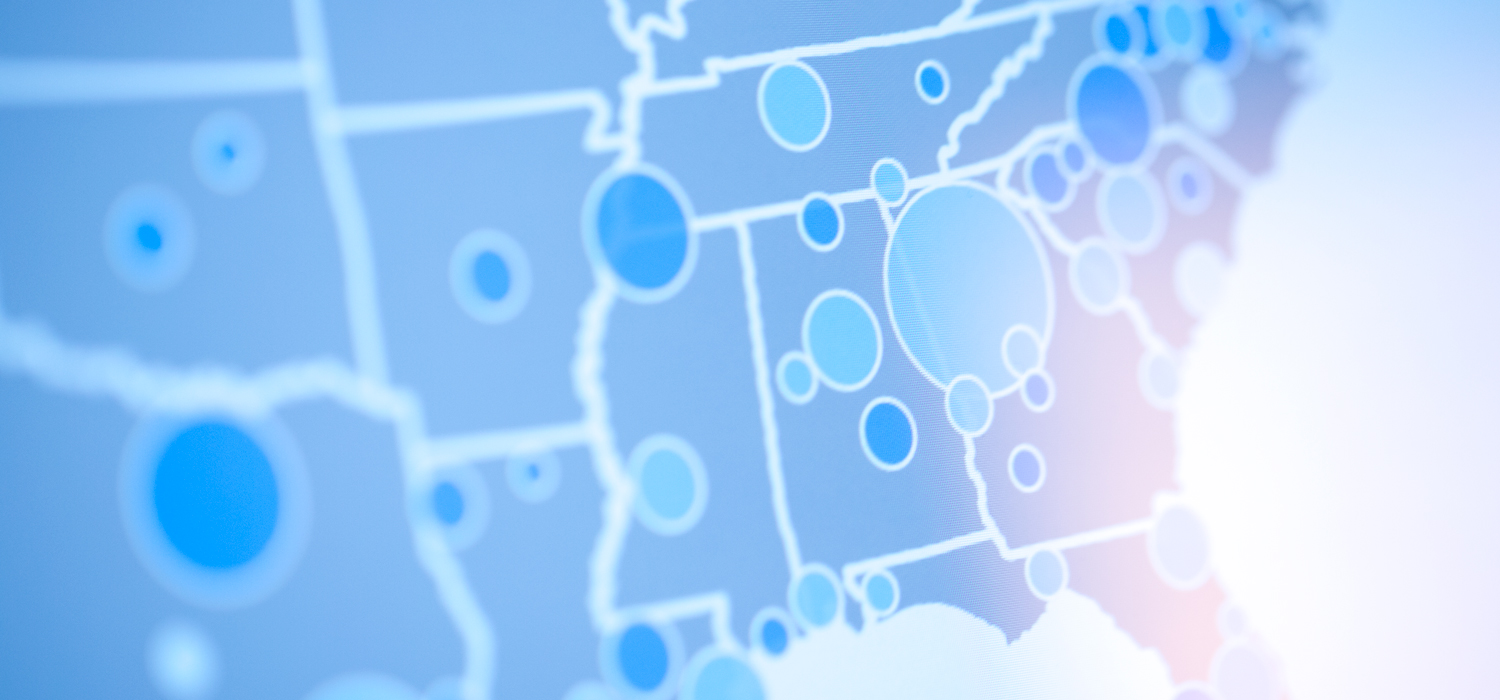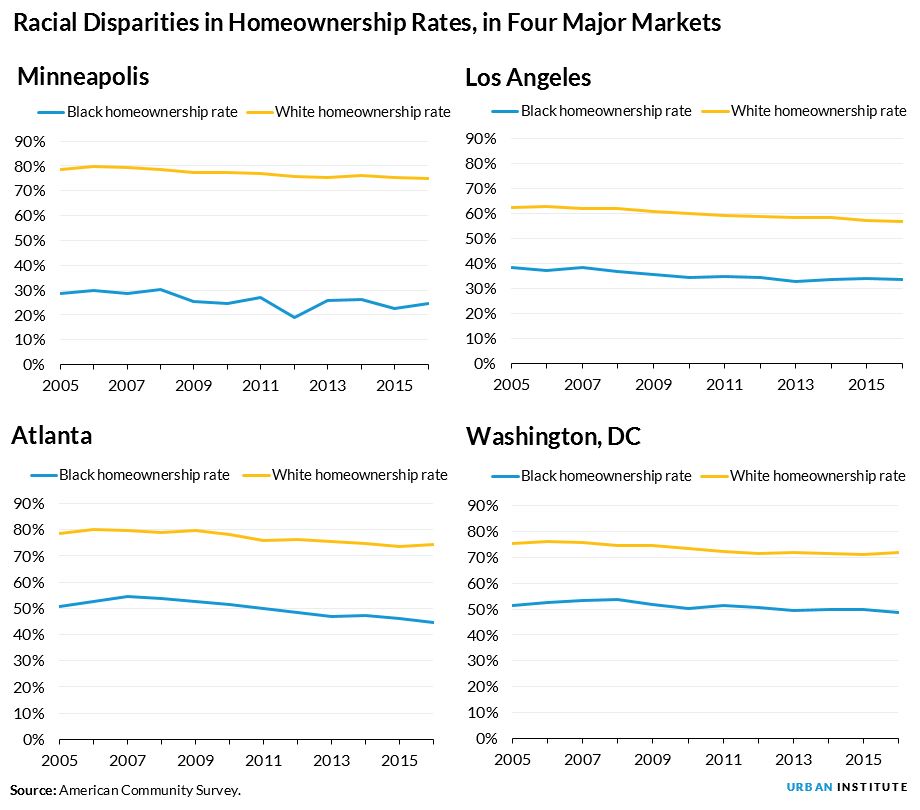
Photo by Maura Friedman/Urban Institute.
In February, Urban Institute researchers writing on Urban Wire will explore racial disparities in housing and criminal justice and the structural barriers that continue to disadvantage the black population in the United States.
Owning a home can increase a family’s financial security, but black people and other minorities significantly lag behind white people in homeownership rates, a major factor contributing to the racial wealth gap.
The drop in black homeownership has not been uniform. Some regions have wider gaps than other regions between black and white homeownership rates. To show the geographical spread of the black homeownership gap, we’ve built a map that shows the size of the gap and the scope of the affected population.
We started by looking at where most black people live in America. We mapped the gap between the white and black homeownership rates in the 100 cities with the largest number of black households. The dots’ color represents the disparity’s magnitude, and the dots’ size is scaled to the number of black households in the metropolitan statistical area.
No city has closed the gap
Not one of the 100 cities with the largest black populations has a black homeownership rate close to the white homeownership rate. Even in places where black households are the majority, like Albany, Georgia, the gap persists.
The city with the smallest disparity is Killeen, Texas. The black homeownership rate is 48.5 percent among just over 26,000 black households, while the white homeownership rate is 63.0 percent—a 14.5 percent gap. Charleston, South Carolina, and Fayetteville, North Carolina, both in the South, are the only other cities in the top 100 with gaps below 20 percent.
It’s better in the South and the West
Northeastern and midwestern cities have the widest homeownership gaps between black and white residents. Four of the five metropolitan areas with the largest number of black households—Atlanta, Chicago, New York City, Philadelphia, and Washington, DC—are in this region. The two cities with the biggest gaps—Minneapolis, Minnesota, at 50 percent and Albany, New York, at 49 percent—are also in this region.
Of the 100 cities we reviewed, northern cities tend to have larger gaps in than cities in the South and on the West Coast.

A closer look at four cities
Many factors contribute to the large homeownership gap in different regions, including the size of the city, economic and job opportunities, the makeup of the black population (native born versus foreign born), home prices, proximity to education centers and colleges, access to traditional financial services, type of housing stock, and affordability.
We can understand how these differences play out by looking at differences between Minneapolis; Atlanta; Washington, DC; and Los Angeles.

Minneapolis has the country’s widest gap and a historically low black homeownership rate. Minneapolis has two important factors to consider:
-
The city has a lower share of black households than most. Only 3.4 percent of the 2.7 million households were black in 2016, even though overall population growth has been rapid. Incomes have been stagnant, and home prices have seen rapid increases.
-
The city has a higher proportion of foreign-born black households than most.
According to the Pew Research Center, 40 percent of black immigrants are homeowners versus 64 percent of Americans overall, and when compared with all US immigrants, foreign-born black people are less likely to own their homes.
Washington, DC, has one of the country’s smallest gaps, and the black homeownership rate (down 2.5 percent) has declined less than the white homeownership rate since 2005 (down 3.6 percent).
DC has an economic center that includes affluent black households in proximity to the region’s major education centers, but home values for black owners, on average, are lower than the average value for white owners.
The Atlanta metropolitan area has seen declining homeownership among black households, with a 6 percent drop since 2005 and a rate that now stands at 44.8 percent, down nearly 10 percent from the 2007 peak.
Atlanta previously saw significant gains in black homeownership, reaching almost 55 percent in 2008. But the region was hit hard during the 2008 housing crisis, and market dynamics have made it difficult for black households to regain a foothold as owners.
Los Angeles has a 23 percent gap, the 10th-smallest gap of the 100 cities we examined. But the city’s black homeownership rate is just 33.5 percent, on par with cities that have larger gaps. Elevated home prices put homeownership out of reach for most people, especially black households.
Understanding the geographic dynamics of wealth and homeownership are important to determine how best to bridge the gaps. The cause and effect of the black homeownership gap will be different depending on the makeup of the local population and other important city factors.
But these gaps are directly connected to black people having less wealth, less savings and retirement funds, less access to educational opportunity, and poorer health outcomes than white people.
Narrowing these gaps should be a priority for anyone concerned with securing equality of opportunity and financial security for all Americans.
Let’s build a future where everyone, everywhere has the opportunity and power to thrive
Urban is more determined than ever to partner with changemakers to unlock opportunities that give people across the country a fair shot at reaching their fullest potential. Invest in Urban to power this type of work.